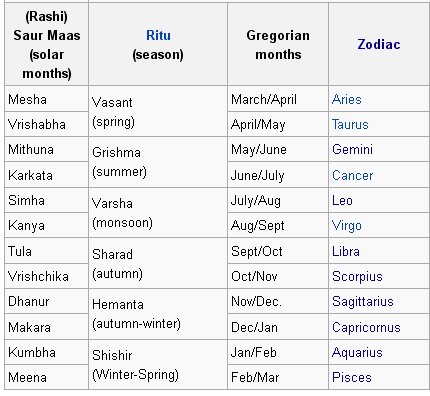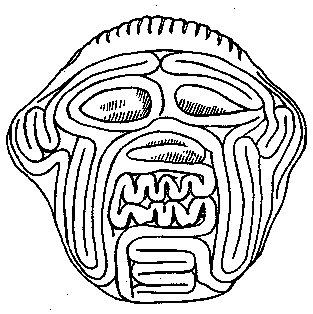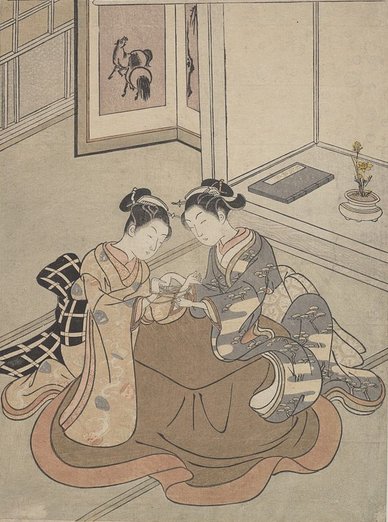Once again. At what probably identifies the heliacal star Vrischika a little moon crescent below has been added, and this could be a sign for 'the lesser light' (Moon) which had succeeded 'the greater light' (Sun) - terminated 50 days earlier:
Indeed, the top of vero in Eb5-10 (→ 50 days after Porrima) is softly rounded like the soft light from the Moon. The Hindu named their Sun month at Leo after the lion - Simha equivalent to Simba (Singha, etc).
Leo and Virgo together marked the monsoon (rainy) season:
Each season carried a pair of months → 6 * 60 = 360 as in MARCH 16 (*360). Counting 6 months ahead from Leo (Simha) we will find Kumbha (Aquarius).
The name probably indicated the month of Humbaba:
... This terra-cotta mask shows the unlovely face of Humbaba/Huwawa, the guardian of the cedar felled by Gilgamesh and Enkidu. The title of 'God of the fortress of intestines' is also given to him, and some scholars conclude from this title, as well as from the pictorial evidence, that Humbaba was the inhabitant and lord of the labyrinth, a predessor of Minotaurus ...
Leo (Sim-ha) was the 3rd month counted from Taurus (Vri-sha-bha) and Aquarius (Kum-bha) was the 3rd month counted from Scorpius (Vri-shchika). Kokoma. Intestines, guts. Vanaga. Bowels, entrails, intestines, rectum, garbage, rage, angry; kokoma hanohano, spite, to despise, to hate, to storm, to bear a grudge, vexation; kokoma hanohano ke, to be in a rage; kokoma hakahanohano, to excite anger; kokoma hanohano manava pohi, to abhor; kokoma ritarita, to abhor; kokoma eete, to abhor, to detest, to be in a rage, angry, ungovernable; tagata kokoma eete, adversary; kokoma hurihuri, animosity, spite, wrath, fury, hate, enmity, to pester, to resent, irritable, offended, hot tempered; kokoma hurihuri ke, to be in a rage. Churchill. ... Suddenly he saw [i ka ui atu ena] that the end of the intestine [ko te potu o te kokoma] was protruding from the rectum and was actually hanging out [ka revareva no] ... [E:99]
Great old pictures contain Signs to be interpreted. For instance: Here we can see the Tail of a Horse in plain view. And to the right there is another picture where we can perceive a crocodile (with a tree) oriented vertically.
The star δ Centauri was named Ma [Horse] Wei [Tail] by the Chinese - the Tail of the Horse. Anciently there were no horses on Easter Island, but the hair hanging down from the tail end of horses was quite remarkable and could be compared to how intestines could be hanging out at the back side of victims. This was therefore probably a Sign for half a year away from the Navel of the Horse (Sirrah):
|
|||||||||||||||||||||||||||||||||||||||||||||||||||||||||||||||||||||||||||||||||||||









